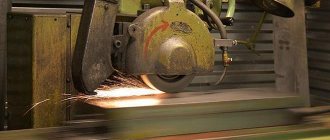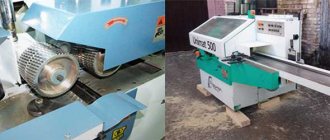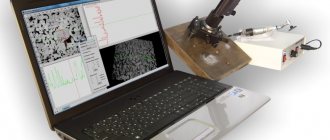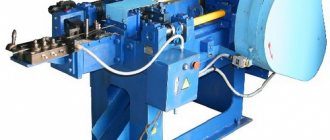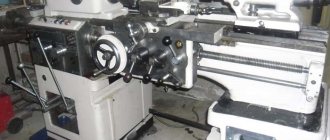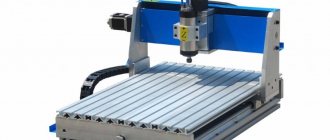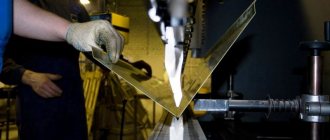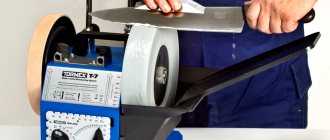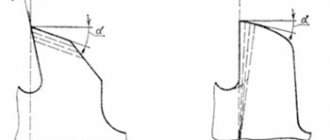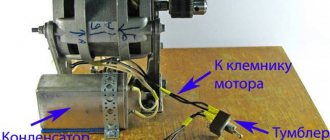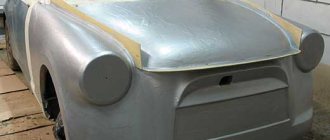The first industrial-grade machine was created by CHARMILLES TECHNOLOGIES in 1952, and the CNC EDM machine appeared in 1969. Compared to traditional methods of metal processing - forging, casting, grinding, milling, the electric spark method can be considered innovative. The first mentions of forged and cast products are several thousand years old.
Electrical discharge machining is a processing in which the shape, size, and quality of the surface of the workpiece change, which occurs under the influence of electrical discharges, which leads to destruction of the surface. During this processing, the workpiece material is melted and/or corrected and removed in a liquid and/or vapor state. Removal is usually explosive (pulse) in nature, occurring in a short period of time on a small area of surfaces, at the location of the discharge channel. The discharge channel is a cylindrical region of small cross-section filled with plasma.
Plasma is ionized gas heated to a high temperature. And the result of breakdown and formation of a discharge channel is the destruction of the metal surface of the electrodes in the places where the channel is localized - electrical erosion of the metal. The intensity of destruction of each electrode is different and, under other conditions, depends on the polarity of the electrodes, the shape and duration of the discharge current pulses. Accordingly, the workpiece being processed is connected in such a way that the intensity of its destruction (processing) is always higher than the intensity of destruction (wear) of the electrode-tool.
By applying electrical discharges or pulses to the spark gap, we get an effect on the metal. For a better processing result, a more suitable path for its implementation is selected accordingly. So, an important element of this effect is that the workpiece can be processed in different directions at the same time.
The piercing machine is designed to process both internal and external spherical elements, working along a 3-dimensional linear path. It is also possible to perform electrical discharge burning.
The world's first Soviet electrical erosive machine was designed to remove a broken tool stuck in a part. Since then, a large number of electrical erosive machines, varied in purpose, performance and design, have been produced in our country and abroad.
Currently, the price of an electroerosive machine of this type fluctuates around 1 million 800 thousand rubles.
Selection of machine technical characteristics
Let us analyze under what “criteria” electrical discharge machines are selected.
1) Geometric parameters
In order to select a stitching machine, which in turn creates a size range, you first need to look at the weight and overall dimensions.
2) Performance
Impact of EDM machines on productivity:
- parameters of discharge current pulses;
- conditions for supplying working fluid and characteristics of its flow;
- material and quality of the electrode tool;
- a way to protect wires from breaks.
3) Accuracy
Criteria on which accuracy depends:
— rigidity;
— accuracy and repeatability of positioning along various axes;
— dynamic characteristics of drives;
— level of temperature deformations;
— stability of generator pulse parameters;
— resistance of the CNC device to interference.
4) Roughness
To process parts, it is important to achieve a certain roughness. Factors that affect the roughness of the part:
- Discharge energy;
- Current strength;
- Tool electrode material.
As an example, Figure 1 shows a table of technical characteristics of three electrical discharge machines.
Fig. 1 - Technical characteristics of EEP machines
Micro-machining broaching machine FORM S 350
Model of the AgieCharmilles FORM S series piercing machine
Piercing EDM machine Form S 350
| Movements X,Y,Z | 350x250x300 mm |
| Desktop | 700x450 mm |
| Bath dimensions | 790x530 mm |
| Workpiece weight | 500 kg |
| Dielectric level | 100-325 mm |
| Dimensions | 1900x1690x2398 mm |
Read more…
Description of the FORM S 350 stitching machine
A special series of electroerosive piercing machines FORM S is focused primarily on processing micro-products with high precision and quality. It is capable of solving standard tasks, having all the capabilities of the FORM P series machines, including preparation for work in offline mode.
The FORM S 350 electroerosive coordinate piercing machine is focused on precision processing of micro-products.
It is helped to demonstrate the unique localization of small elements by the ISPG generator, which is capable of obtaining internal radii of less than 4 microns due to the record-breaking small interelectrode gap.
Strict requirements for the geometric accuracy of the machine and double thermal stabilization guarantee excellent results even with significant temperature fluctuations in the production room.
Since the FORM S 350 electroerosive piercing machine is created on the basis of FORM P machines, all their rich functionality is fully available to it.
A multi-position electrode changer is indispensable in the manufacture of complex multi-place molds, and 3DS technology will improve the structure of the machined surface, which will increase the removal rate of injection molded products and reduce their cost by reducing wall thickness.
Drive of the main movement in the machine
The electrode-tool feed drive is the most important actuator in piercing machines. The transmission of motion from the electric motor to the EI can be carried out by a rack and pinion transmission, a screw transmission or a differential transmission.
Let's consider two types of feed drives and compare which one is more preferable:
1) Electromechanical drive: The lead screw receives rotational motion through a gearbox from a DC electric motor. The rotation of lead screw 1 occurs in a nut, which is fixed in the spindle. The spindle receives a reciprocating motion thereby performing the supply of EI, and after the end of processing, the removal of EI. The spindle is supported by bearings.
2) Electro-hydraulic drive: in order for the piston to move in oscillation mode, the solenoid with windings is connected to the alternating current network. The solenoid controls the movement of the piston valve. The spool reacts to changes in the interelectrode space between the EI and the workpiece, when it receives a signal on the solenoid winding, the spool moves, and the piston connected to the spool moves in the cylinder.
After reviewing the operating principle of the drives, it became clear that from the point of view of system speed and feed stability, the electrohydraulic drive turned out to be preferable. With the help of such a drive it is possible to create quite large forces during processing. But if you look, on the other hand, from the point of view of processing accuracy, then the electromechanical drive is inferior to the electrohydraulic one. This is explained by the elimination of backlash. However, the electric hydraulic drive is large in size and weight, and even then the cost of this drive is high.
Ultra-precision broaching machines FORM X
FORM X series piercing machines
Piercing EDM machine Form 1000
| Movements X,Y,Z | 220x160x250 mm |
| Desktop | 450x200 mm |
| Bath dimensions | 590x370 mm |
| Workpiece weight | 35 kg |
| Dielectric level | 50-210 mm |
| Dimensions | 2000x1540x2270 mm |
Read more…
Form X 400 piercing EDM machine
| Movements X,Y,Z | 400x300x350 mm |
| Desktop | 500x400 mm |
| Bathtub dimensions (LxW) | 790x530 mm |
| Workpiece weight | 800 kg |
| Dielectric level | 0-290 mm |
| Dimensions | 1410x2460x2660 mm |
Read more…
Form X 600 piercing EDM machine
| Movements X,Y,Z | 600x400x500 mm |
| Desktop | 850×600 mm |
| Bathtub dimensions (LxW) | 1280x1040x450 mm |
| Workpiece weight | 2000 kg |
| Dielectric level | 0-390 mm |
| Dimensions | 1790X2860X3110 mm |
Read more…
Machine guides
Guides are used to move the moving parts of the machine along the frame, ensuring the correct trajectory of the workpiece or part and for the perception of external forces. All metal-cutting machines use guides: sliding, rolling, combined, fluid friction, aerostatic.
The requirements are: initial manufacturing precision, durability, high rigidity, high damping properties, low friction forces, simplicity of design, the ability to provide adjustment of the gap-tension.
Depending on the location, guides are also divided into horizontal, vertical, and inclined.
Machine spindle units
Rice. 4 — Design of the piercing head of the EE machine
The spindle of EEP machines is a piercing head; you can see it in Figure 4, which is presented above.
- Hydrostatic guide;
- Spindle;
- Hydraulic cylinder;
- Shaft
- Hydraulic brake
- Gearbox
- Hydropanel
- Frame
- Screed
- Adapter plate
Machine feed drives
Electrical erosion destruction is carried out in a working environment, which is supplied to the MEP. Therefore, each EEP machine is equipped with a working fluid supply system, which is shown in Figure 5. Since the working fluid becomes contaminated during the processing process, the layout of the machine also includes a working fluid regeneration system. In EEP machines these two systems are usually combined.
Rice. 5 — RJ supply and regeneration system
- Capacity
- Hydraulic pump
- Pressure gauge
- Filtration system
- Hydraulic distributor
- Valve
- Hydraulic receiver
- Rotameter
- Tap
- Tap
- EI
- Detail
- Working bath
- Drain
Working fluid from the tank >> hydraulic pump. Regulation of the supply of working fluid - with a pressure gauge. Working fluid flow >> filtration system >> hydraulic distributor. When the required pressure is exceeded, the valve opens and part of the working fluid >> hydraulic receiver >> either through valve 10 into the working bath, or through valve 9 through the hollow EI. The workpiece is in the working bath. To regenerate the working fluid >> the working bath through the drain.
Machine support system
The EEP machine bed is made in the form of a box, which gives the structure stability and increased rigidity. The drum carriage, column fastenings, table guides are critical parts of the frame that are subjected to scraping and polishing.
In order to make a frame, you need to use materials that will have high strength and have a low coefficient of thermal expansion. To manufacture the EEP machine bed, a special type of cast iron was used - high-strength.
Stitching machines
So, if we briefly go over the tasks that piercing machines perform, we note that they contribute to high-performance processing. Namely, piercing machines can process deep and narrow cavities without using washing. Also, we note that the machines are highly productive, especially if the nursing mode is used.
The advantage of a piercing machine is that high accuracy is maintained. This means that the positioning of the working parts of the machine is also accurate, and as a result, the electrodes have a low wear value.
This machine achieves a high roughness class. The part will have a highly homogeneous surface, even if the surface area being processed is large. And since the electrodes have a small gap, performance is not lost.
Next, we will talk about copying and broaching machines.
Copy-stitching machine
The purpose of these machines is to make holes in parts. Also, using a copying-stitching machine, you can mark products, make volumetric copies, and fine-tune parts. As for the material that the machine can process, it is: hardened steel, high-strength electrically conductive composite alloys, titanium, graphites and so on. Also, machines are used, as mentioned just above, for parts of three-dimensional shapes. For example: molds, dies, stamps, cutting dies. Copying and broaching machines can process holes that can have different shapes and configurations.
The machines have a rigid frame. You can often find copying and broaching machines with numerical control.
Jig broaching machine
These machines are convenient for processing various shaped surfaces. They have high accuracy. Hard alloys are processed most often, and therefore the machine is quite productive for this type of material. It is better to use, of course, a machine with a CNC system, since program control expands the possibilities of using this equipment. A coordinate piercing machine can process shape-forming molds, matrices, and so on.
The structure of the machine is stable and rigid. Typically, the machines have: ultra-high-speed linear motors and a precision refrigerator-thermostat with an adjustment resolution of 0.2 degrees. The machines are also often used for micro-machining.
Electroerosive piercing machines
Thanks to electro-erosive piercing machines, electro-erosive processing of materials is carried out, most often these are difficult-to-process materials, such as stainless steel, alloy steel, tool steel, titanium, hardened steel, hard alloy and so on.
Erosion machining is usually carried out using three axes: X,Y,Z. But besides this, a 4th C axis is installed on electroerosive piercing machines. It allows you to expand the range of possibilities. And the process of burning screw surfaces is easy. Also, thanks to the 4th axis, threaded holes are produced (the material of the part can be either hard alloy or hardened steel).
Electroerosive piercing machines make it possible to produce profile recesses of any complex shape. Often, work on this equipment is carried out after preliminary processing on milling and lathes. One of the advantages of an electroerosive piercing machine is that recesses, which can have different shapes, can also be made in the internal walls. To do this, you need to insert an electrode along the Z axis (into the hole). Then we can observe the burning process along the remaining axes.
Also, an electroerosive piercing machine makes it possible to produce threaded holes.
Stitching machines have their own special place in production due to their ability to perform complex tasks. The machines are productive, high quality and accurate.
Typical representatives
In the process of preparing the abstract, several modern representatives of electroerosive piercing machines equipped with a numerical program control system were disassembled. Such machines as CNC-C90 and ZNC-50 were presented. Their main technical characteristics and features are given below.
Rice. 6 – Electroerosive piercing CNC-C90
| Options | Unit change | CNC-C90 |
| Dimensions of the working fluid bath | mm | 1240 x 700 x 435 |
| Table dimensions | mm | 800 x 450 |
| Move X, Y, Z | mm | 500 x 400 x 350 |
| Distance from the main axis to the plane of the desktop | mm | 650 |
| Movement (quills) along the Z axis | mm | — |
| Max. workpiece weight | kg | 1350 |
| Max. electrode weight | mm | 11 / 200 |
| Max. dielectric capacitance | liter | 600 |
| Max. processing speed | mm3/min | 480 |
| Min. wear rate | % | < 0.1 |
| Max. roughness index of the machined surface | μm | < Ra 0.12 |
| Max. output current | A | 60 |
| Max. input power | kW | 4.06 |
| Machine dimensions (Length x Width x Height) | cm | 205 x 180 x 244 |
| Final weight of the machine | kg | 2,635 |
FEATURES of the piercing machine:
- Program with auxiliary icons for easier work
- Built-in memory, hard disk and support internet or RS232 data transfer program
- Equipped with a high-precision Heidenhain linear encoder (1µm)
- Extended linear stroke for circular machining and moving
- Precision ball screw for precise transmission
- Double filtration system separates carbon residue more efficiently
- Multi-point fire detection system
- Memory for up to 1000 processing parameter settings, 20 spark data per installation
- Vector and Angular EDM Functions
- Ability to edit programs
- GM code and dialog editing function
- 48 processing modes
- Auto memory for 60 working coordinate settings
- Automatic recording of processing time and material consumption
- Available equipment - ATS (4 tools / 6 tools / 20 tools)
Rice. 7 – Electroerosive piercing ZNC-50
| Options | Unit change | ZNC-50 |
| Dimensions of the working fluid bath | mm | 940 x 530 x 350 |
| Table dimensions | mm | 630 x 360 |
| Move X, Y, Z | mm | 350 x 250 x 200 |
| Distance from the main axis to the plane of the desktop | mm | 520 |
| Movement (quills) along the Z axis | mm | 200 |
| Max. workpiece weight | kg | 500 |
| Max. electrode weight | mm | 50 |
| Max. dielectric capacitance | liter | 300 |
| Max. processing speed | mm3/min | 420 |
| Min. wear rate | % | < 0.1 |
| Max. roughness index of the machined surface | μm | < Ra 0.12 |
| Max. output current | A | 50 |
| Max. input power | kW | 3.3 |
| Machine dimensions (Length x Width x Height) | cm | 140 x 138 x 220 |
| Final weight of the machine | kg | 1,375 |
General purpose broaching machines FORM E
FORM E series piercing machines
Piercing EDM machine Form E 350
| Movements X,Y,Z | 350x250x250 mm |
| Desktop | 630x400 mm |
| Bath dimensions | 955x540 mm |
| Workpiece weight | 400 kg |
| Dielectric level | 140-310 mm |
| Dimensions | 1000x1875x2430 mm |
Read more…
Piercing EDM machine Form E 600
| Movements X,Y,Z | 600x400x400 mm |
| Desktop | 800x600 mm |
| Bathtub dimensions (LxW) | 1227x800 mm |
| Workpiece weight | 1000 kg |
| Dielectric level | 50-450 mm |
| Dimensions | 1600x2845x2858 mm |
Read more…
Description of FORM E piercing machines
FORM E (Effective) is a special promotional series of AgieCharmilles electroerosive piercing machines, which has a rich standard set and an attractive price.
In its base, it has a rotating axis “C” with a rotation speed of up to 100 rpm and a moment of inertia of 2000 kg*cm2, an automatic electrode changer, a dielectric cooling unit, as well as a wide base of generator modes and processing technology with zero wear with copper and graphite electrodes.
Electroerosive broaching machine
The FORM E 350 comes standard with an 80A ISPG digital high-performance generator, while the FORM E 600 has a maximum processing current of 140A.
FORM E series piercing machines are optimally suited for the production of molds and dies, as well as for solving other tool production tasks.
Like all other coordinate-piercing
GF AgieCharmilles, FORM E machines are manufactured in Switzerland and have a short delivery time.
